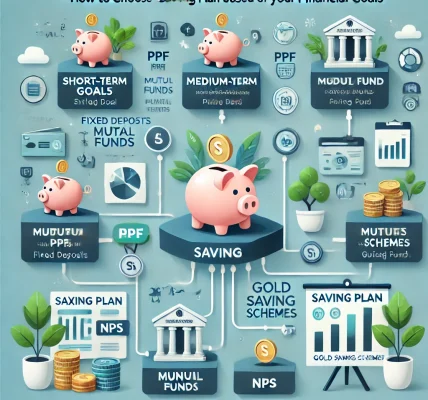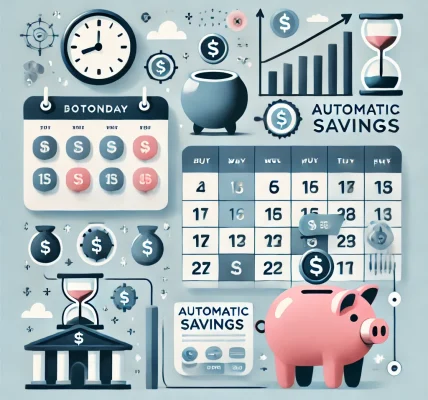Introduction
Saving money is essential for financial stability, but choosing the right savings plan can be challenging. The two primary types of savings plans—short-term and long-term—serve different financial goals. Understanding their differences will help you determine which one aligns best with your needs. In this blog, we’ll explore short-term and long-term saving plans, their benefits, and how to decide which is right for you.
What Are Short-Term Saving Plans?
Short-term savings plans are financial instruments designed to meet immediate or near-future financial goals, typically within a one to five-year timeframe.
Benefits of Short-Term Saving Plans:
- Quick Access to Funds – Money is readily available when needed.
- Low Risk – Generally, these plans have minimal risk compared to long-term investments.
- Liquidity – Easily converted into cash without significant penalties.
- Flexibility – Can be used for various purposes like vacations, emergency funds, or purchasing gadgets.
Best Short-Term Saving Options:
- High-Interest Savings Accounts – Provide higher returns than standard accounts with easy access to funds.
- Fixed Deposits (FDs) with Short Tenure – Guaranteed returns with low risk.
- Recurring Deposits (RDs) – A disciplined savings option with monthly contributions and fixed interest.
- Money Market Accounts – Offer better interest rates than regular savings accounts while maintaining liquidity.
- Short-Term Debt Mutual Funds – Provide moderate returns with relatively low risk compared to stocks.
What Are Long-Term Saving Plans?
Long-term saving plans focus on financial goals that require disciplined saving and investment over an extended period, typically more than five years.
Benefits of Long-Term Saving Plans:
- Wealth Accumulation – Helps build substantial wealth over time.
- Higher Returns – Offers better growth potential compared to short-term savings.
- Retirement Planning – Ensures financial security in old age.
- Tax Benefits – Many long-term savings plans offer tax advantages.
- Compounding Advantage – The longer the investment, the more compounding benefits increase wealth.
Best Long-Term Saving Options:
- Public Provident Fund (PPF) – A government-backed, tax-free investment with a 15-year maturity.
- National Pension System (NPS) – Ideal for retirement savings with tax deductions and annuity benefits.
- Equity-Linked Savings Schemes (ELSS) – Mutual funds offering high returns with tax-saving benefits.
- Life Insurance Plans – Some policies provide savings and investment benefits along with protection.
- Real Estate Investments – Property investments that appreciate over time and generate passive income.
- Stocks and Mutual Funds – Long-term investments that offer high returns despite short-term market fluctuations.
Short-Term vs. Long-Term Savings: Key Differences
| Feature | Short-Term Savings | Long-Term Savings |
|---|---|---|
| Timeframe | 1-5 years | 5+ years |
| Risk Level | Low to moderate | Moderate to high |
| Liquidity | High | Low to moderate |
| Return Potential | Lower | Higher |
| Goal Type | Immediate needs | Future financial goals |
| Tax Benefits | Limited | Often available |
| Investment Type | Savings accounts, FDs, RDs | Stocks, PPF, Real estate |
How to Choose the Right Savings Plan?
Selecting the right savings plan depends on your financial goals and risk appetite. Consider these factors:
- Define Your Goals:
- If you need money within 1-5 years, opt for short-term savings.
- If your goal is 5+ years away (e.g., retirement, buying a house), choose long-term savings.
- Assess Your Risk Tolerance:
- If you prefer lower risk, go for fixed deposits or savings accounts.
- If you can tolerate market fluctuations, mutual funds and stocks offer better long-term returns.
- Evaluate Liquidity Needs:
- If you need funds accessible at any time, opt for short-term plans.
- If you can lock in funds for a long time, invest in long-term plans for better returns.
- Consider Tax Benefits:
- Long-term plans like PPF, NPS, and ELSS offer tax advantages.
- Short-term plans usually have limited or no tax benefits.
- Balance Both Approaches:
- A smart strategy is to maintain both short-term and long-term savings.
- Use short-term savings for emergencies and quick expenses while investing in long-term plans for future financial security.
Conclusion
Choosing between short-term and long-term savings depends on your financial situation, goals, and risk tolerance. A well-balanced financial plan incorporates both types of savings, ensuring financial flexibility and long-term growth. Evaluate your needs carefully and create a savings strategy that secures your future while addressing present financial demands.
Start saving today and take control of your financial future!



